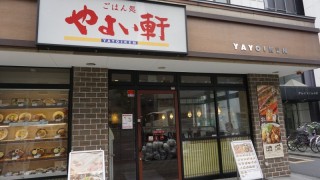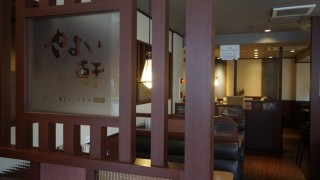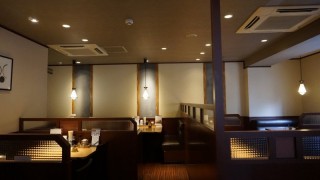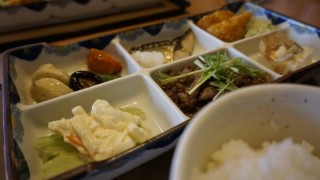Loading
Search
▼ Yayoiken Ryogoku Teishoku
- Category:Lunch

JAPAN TRAVEL
A discovery of home style cooking
Nothing beats the experience of discovering a new place, guided by a local resident who finds it joyful to show you around and introduces you to anything local. That morning I met Nao, a Tokyoite I got to know during my second visit to Japan. We made an appointment to have breakfast together, and of course, given the fact that he is Japanese, I asked Nao to take me to some traditional establishments. That was the time I got introduced to Yayoiken.
At first, I thought it was just a regular restaurant selling common Japanese dishes like donburi or curry rice. In fact, Yayoiken specializes in one of the more traditional dishes that I have yet to discover: teishoku.
Teishoku is a Japanese set meal that comprises of at least four components: rice, miso soup, a main dish, and a side dish. Teishoku is considered a home-cooked meal, so don't be surprised if you find humble and healthy ingredients that people consume on a daily basis. Teishoku vary depending on its main dish, such as yakizalkana teishoku (grilled fish), tempura teishoku (battered and deep-fried fish, shrimp, or even vegetables), tonkatsu teishoku (pork cutlet), sashimi teishoku, and many more. In Yayoiken, you can even browse some of the less-traditional menu items such as katsu with tartar sauce, grilled pork cheek with butter, even hamburger or steak teishoku. I decided to order "Irodori Teishoku" which consisted of multiple main dishes, each served in a smaller portion. For the side dish, teishoku usually comes with a small plate of pickles or salad.
The traditional touch that impressed me from teishoku is the placement etiquette of each meal component. Your set meal will be served in front of you with the rice to your left, miso soup to your right, and the main dish positioned behind those bowls. Of course, you are free to rearrange these placements based on your preference. Looking back to the food components, teishoku may sound too normal as a dish. However, there's a rich traditional value behind it that makes teishoku more than just some food to fulfil one's appetite. Japanese people believe that a balanced diet is essential. Therefore, it's important for them to always prepare nutritious food comprising lots of side dishes for every meal (even takeaways like bento boxes), and that's the main value of teishoku. Besides health matters, teishoku has a religious background as it was the type of food served at Zen temples.
The concept was known as ichiju-issai ("one soup, one side dish"), that as time went by, spread across the nation and was adopted by restaurants as daily food.
As it's mainly known as a home-cooked meal, a set meal of teishoku usually comes in a pretty affordable price. The cheapest one at Yayoiken is just around ¥390 for "Natto Teishoku" (natto is a Japanese traditional fermented soy bean dish), while the most expensive one is around ¥1,500, mainly for the restaurant's premium and limited-edition menus. Prices charged at other teishoku restaurants will not be far from the range of ¥500 - 1,000. Yayoiken is actually pretty modern. The restaurant is just within walking distance from Ryogoku's main tourist hub, located by a main road. The building itself is new, not a typical family-run shop house with a modest and homely air.
But as a restaurant that serves a country's beloved traditional dish, Yayoiken still retains a strong traditional vibe with wooden accents, dimmed yellow lights, and sliding paper doors. And while other restaurants in Japan use touch screen machines to browse the menu and make payments, this restaurant still uses menu books placed on each table.
Getting there
Yayoiken is just about 300m to the south of Ryogoku Station. Reachable on foot.By Vicky Amin
- December 16, 2019
- Comment (2)
- Trackback(0)
Comment(s) Write comment
amoxil tablets - <a href="https://combamoxi.com/">comba moxi</a> amoxicillin pill
-
k4vhg
- July 7, 2025






I’ll certainly bring back to skim more. https://proisotrepl.com/product/colchicine/
Conniereugs Web Site- July 29, 2025